Juvenile

Juvenile
06/12/2010 - Kensington/Albany neighborhood, CA
Juvenile
06/12/2010 - Kensington/Albany neighborhood, CA
|

Juvenile on another's back
06/12/2010 - Kensington/Albany neighborhood, CA
Juvenile on another's back
06/12/2010 - Kensington/Albany neighborhood, CA
|

Two juveniles on the left
06/12/2010 - Kensington/Albany neighborhood, CA
Two juveniles on the left
06/12/2010 - Kensington/Albany neighborhood, CA
|
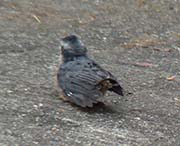
Young - unable to fly -- no tail feathers
07/16/2007 - Kensington/Albany neighborhood, CA
Young - unable to fly -- no tail feathers
07/16/2007 - Kensington/Albany neighborhood, CA
|
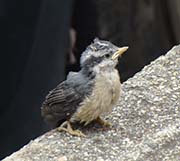
Young - unable to fly -- no tail feathers
07/16/2007 - Kensington/Albany neighborhood, CA
Young - unable to fly -- no tail feathers
07/16/2007 - Kensington/Albany neighborhood, CA
|

Juvenile
07/21/2008 - Kensington/Albany neighborhood, CA
Juvenile
07/21/2008 - Kensington/Albany neighborhood, CA
|
Adult
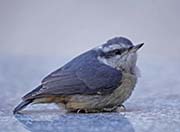
Stunned after flying into a window - looks like a juvenile
07/02/2011 - Kensington/Albany neighborhood, CA
Stunned after flying into a window - looks like a juvenile
07/02/2011 - Kensington/Albany neighborhood, CA
|

Male
09/11/2010 - Coyote Hills, Fremont, CA
Male
09/11/2010 - Coyote Hills, Fremont, CA
|

Female
09/07/2014 - Jewel Lake; Berkeley, CA
Female
09/07/2014 - Jewel Lake; Berkeley, CA
|
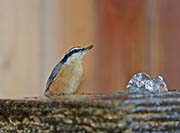
11/03/2013 - Kensington/Albany neighborhood, CA
11/03/2013 - Kensington/Albany neighborhood, CA
|

09/28/2012 - Coyote Hills, Fremont, CA
09/28/2012 - Coyote Hills, Fremont, CA
|
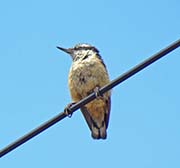
Female
07/16/2007 - Kensington/Albany neighborhood, CA
Female
07/16/2007 - Kensington/Albany neighborhood, CA
|
Diet:
Red-breasted Nuthatches eat insects, seeds and nuts.
They forage on the trunk and branches of trees.
Unlike woodpeckers and creepers,
they can climb down a tree head first looking for food.
Their feet (three toes forward, one back) are short and sturdy
with long toes and sharp claws.
They will store seeds and invertebrates in bark crevices for
later consumption.
They eat both the cracked sunflower seeds and suet in my yard.
Courtship:
Red-breasted Nuthatches are monogamous.
Males court females by turning their backs to them, singing,
and swaying from side to side with crest feathers raised,
or by flying together in an exaggerated display of slowly
fluttering wings or long glides.
Nesting:
Red-breasted Nuthatches excavate their own nests either in
soft wooded trees or trees with rotten snags.
They will also sometimes use old woodpecker holes.
Both sexes will excavate the nest hold, but the female builds the
nest inside.
The nest is shaped like a cup and made from grass,
needles, bark, moss, feathers, and hair.
They coat the entrance to the nest hole with pitch.
This may help to keep predators away.
The number of eggs laid varies from 4-8.
Vocalization:
No information.
Habitat and Range:
The Red-breasted Nuthatch is found throughout most of North America except for
the far north and Mexico.
Plumage/Molt:
A complete molt after the breeding season (June-October),
usually in the breeding area.
Sometimes there may be a partial molting before the breeding season.
Migration:
While not all Red-breasted Nuthatches migrate, they
are the only Nuthatches that regularly migrate.
Tongue/feet:
No information.
Bibliography:
- Harrap, Simon and David Quinn , Chickadees, Tits, Nuthatches & Treecreepers,Princeton University Press, 1995
- Sibley, David Allen, The Sibley Guide to Bird Life & Behavior,Alfred A. Knopf, New York, 2001
- http://birdweb.org/birdweb Seattle Audubon Society, Accessed June, 2012
- http://www.birds.cornell.edu The Cornell Lab of Ornithology, Accessed June, 2012
- http://en.wikipedia.org The Free Encyclopedia, Accessed June, 2012
Top of Page











